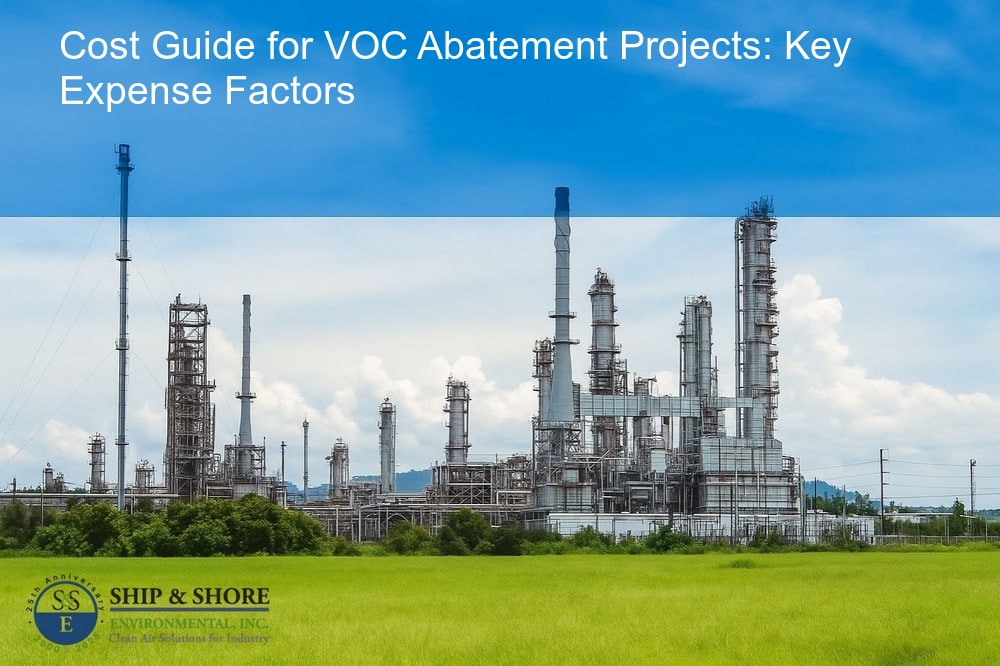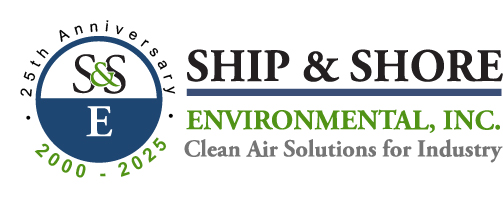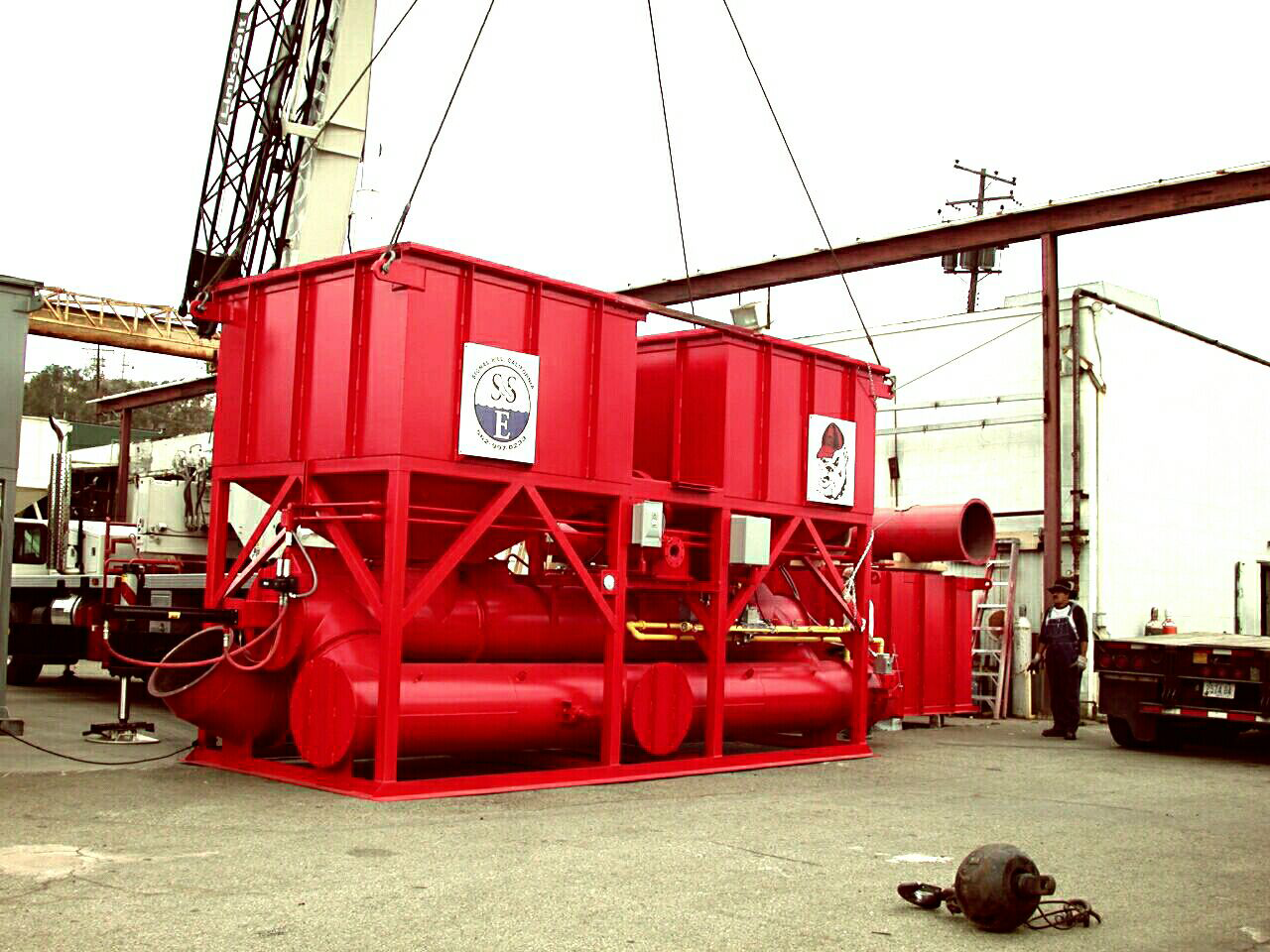
Understanding the Cost Guide for VOC Abatement Projects
October 13, 2025 6:26 amImportance of Volatile Organic Compound (VOC) Abatement Projects
Addressing the environmental and health impacts of volatile organic compounds (VOCs) is critical, and that’s where our detailed cost guide for VOC abatement projects comes into play. VOCs are harmful pollutants that can have a range of negative effects on both human health and the environment. Regulatory agencies have set strict limits on VOC emissions, making VOC abatement essential for compliance. Through understanding the financial aspects of these projects, businesses can better plan and allocate resources effectively.
Understanding the Cost Guide for VOC Abatement Projects
Our cost guide for VOC abatement projects is designed to provide a comprehensive overview of the financial considerations involved. It takes into account the various elements of these projects, from initial evaluation to the implementation of abatement techniques. By breaking down these costs, we help businesses navigate through the complexities and make informed decisions. Each project may require different approaches, and this guide aims to cover the diverse needs and specificities involved in VOC abatement.
Factors Influencing the Expenses of VOC Abatement Projects
Several factors influence the overall expenses of VOC abatement projects, and understanding these can help in managing costs effectively. The first significant factor is the scale of the project – larger operations typically require more extensive measures. The type of industry also plays a role; for instance, manufacturing processes may have different VOC abatement needs compared to a small commercial enterprise. Additionally, the choice of technology and equipment can heavily impact the budget. Not all abatement systems are created equal, and the initial investment as well as long-term operational costs should be considered.
Breakdown of Costs in VOC Abatement Projects
When embarking on a VOC abatement project, it’s crucial to understand the various elements that contribute to overall costs. Several factors come into play, including initial assessment, equipment procurement, installation, operation, and maintenance. Each stage has its unique expenses, which can add up quickly if not managed properly. For example, the initial assessment phase usually involves site visits and sampling, often necessitating specialized expertise. This phase is crucial as it informs the selection of abatement technologies and methods.
How Equipment Selection Affects the Cost Guide for VOC Abatement Projects
The selection of equipment can dramatically impact the cost guide for VOC abatement projects. Different technologies, such as thermal oxidizers, catalytic oxidizers, or adsorption systems, come with varying price tags. While some technologies may require higher upfront investment, they might offer greater efficiency and lower operational costs in the long run. Conversely, opting for cheaper equipment may result in higher operational or maintenance expenses.
Consider the following factors when selecting equipment:
- Initial cost and installation fees
- Operational efficiency
- Maintenance requirements
- Energy consumption
- Longevity and reliability
Choosing advanced technologies may sometimes appear as a costlier option; however, these solutions can often provide better long-term value by minimizing operational headaches and preventing frequent maintenance issues.
Cost Efficiency through Advanced VOC Abatement Technologies
Advanced technologies in VOC abatement contribute significantly to cost efficiency. Technologies like regenerative thermal oxidizers (RTOs) and catalytic oxidizers offer excellent performance in destroying VOCs. Though they may have higher initial costs, their robust design and high efficiency lead to substantial savings on energy and operational costs over time. Additionally, these advanced systems often come with longer warranties and better support, further enhancing their value proposition.
When evaluating cost efficiency, it’s important to consider:
- Energy-saving capabilities
- Lowered emissions leading to potential avoidance of regulatory fines
- Reduced downtime due to less frequent maintenance
- Enhanced process control and monitoring capabilities
Overall, investing in advanced technologies can pave the way for long-term savings, making it easier to manage budgets and maintain compliance with environmental regulations.
Did you know? Advanced VOC abatement technologies can significantly reduce costs by increasing efficiency and minimizing the amount of equipment needed for the project.
Best Practices and Money-Saving Strategies in VOC Abatement
Implementing best practices and strategic decisions in Volatile Organic Compound (VOC) abatement can lead to significant cost savings. An essential strategy involves the selection of suitable technologies tailored to the specific needs of an operation. For example, centralized thermal oxidizers may be more effective in some scenarios, while decentralized adsorption systems might be better suited for others. By conducting thorough assessments and leveraging expert recommendations, we can ensure that each installation provides optimal efficiency, thus reducing operational expenditures in the long term.
The Role of Professional Services in Managing VOC Abatement Costs
Partnering with professional service providers like Ship & Shore Environmental, Inc. can be instrumental in managing costs associated with VOC abatement. Expert consultants can provide invaluable insights and bespoke solutions that align with the unique requirements of each project. From initial feasibility studies to the implementation and ongoing maintenance of abatement systems, professional guidance helps to minimize unforeseen expenses and ensures compliance with environmental regulations.
Further Insights into the Cost Guide for VOC Abatement Projects
Understanding the complexities involved in VOC abatement requires a comprehensive cost guide for VOC abatement projects. This guide sheds light on the various factors that impact the costs, including equipment selection, installation processes, and maintenance. Utilizing advanced abatement systems and state-of-the-art technology can result in more efficient processes and long-term savings. For further details, delve deeper into our abatement systems and discover how we can tailor solutions to meet our project’s specific needs.
FAQ
What factors affect the cost of VOC abatement projects?
Several factors influence the expenses of VOC abatement projects, including the size of the facility, the type of VOCs present, the volume of emissions, the selection of abatement technology, and regulatory requirements. Additionally, the complexity of installation and ongoing operational and maintenance costs play a significant role. By comprehensively analyzing these elements, we can create a clearer picture of the investment required for a successful abatement system implementation.
How can we minimize the costs of VOC abatement?
To minimize costs, it is crucial to invest in the most suitable technology for your specific requirements. This includes considering energy-efficient systems and potential for resource recovery. Furthermore, conducting regular maintenance ensures that the systems operate effectively, preventing costly downtime or repairs. Implementing process changes to reduce VOC generation can also lead to cost savings, alongside observing best practices in the operation of abatement equipment.
What are the potential long-term savings from investing in advanced VOC abatement technologies?
Although advanced VOC abatement technologies often come with a higher initial cost, they typically offer greater efficiency and reduced energy consumption, leading to long-term savings. Moreover, such systems may have higher destruction efficiency rates, minimizing the risk of non-compliance with environmental regulations which could result in fines. Additionally, some advanced systems offer the potential for heat recovery, which can be used elsewhere in the facility, thereby reducing utility costs.
How does equipment selection impact overall VOC abatement project costs?
Choosing the right equipment is vital to ensuring cost efficiency in VOC abatement projects. Different technologies, such as bio-filtration, thermal oxidation, or carbon adsorption systems, vary in price and operational costs. Thus, selecting a system that matches the specific volume, composition of the emissions, and regulatory requirements can prevent overspending. Moreover, the adaptability and scalability of the equipment to future changes in production also affect its cost-effectiveness.
What is the role of professional services in VOC abatement projects?
Engaging with professional services offers expertise in planning, implementing, and maintaining VOC abatement systems. Professional teams guide us through a cost-effective selection of technologies, facilitate compliance with stringent regulations, and help avoid potential penalties. By leveraging their experience, we can design and execute an abatement strategy that is tailored to our operational needs, thus potentially reducing long-term expenses and ensuring system reliability.
Categorised in: Blog

